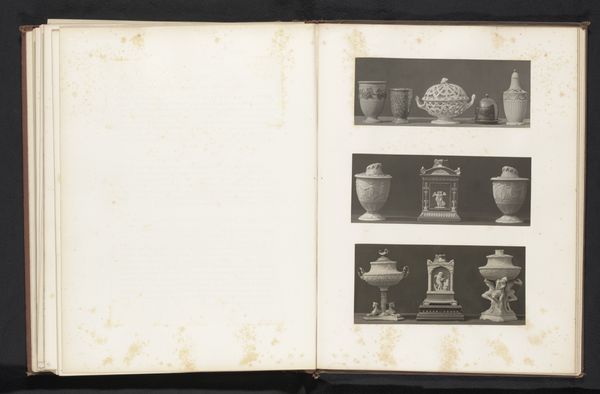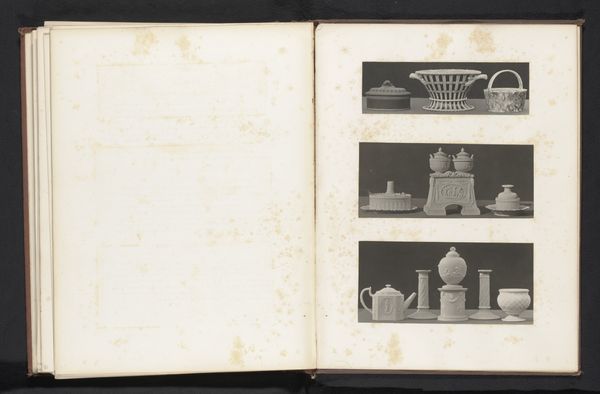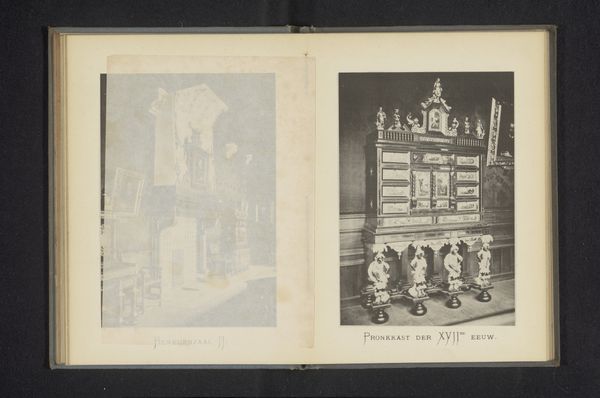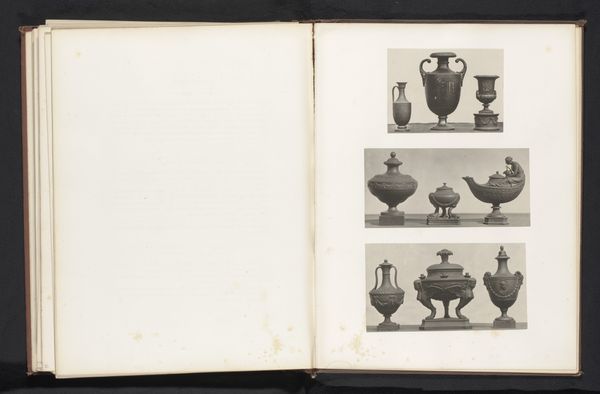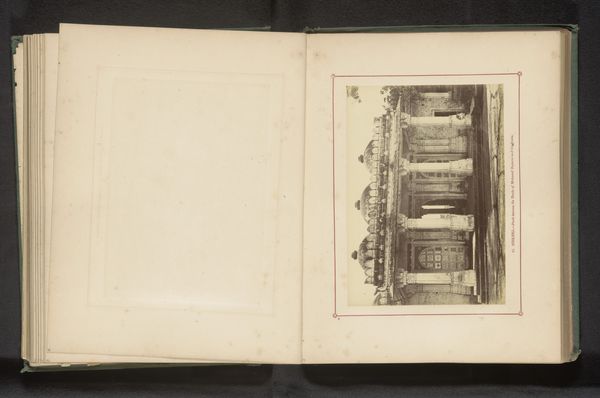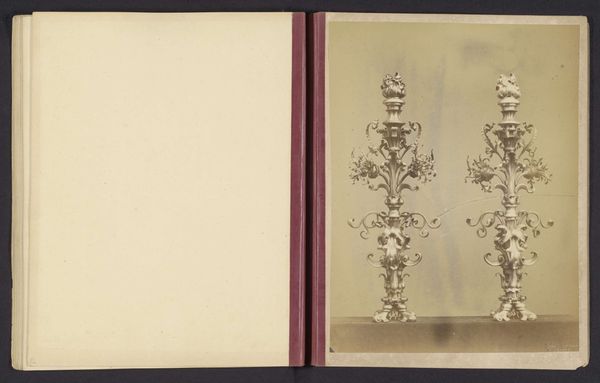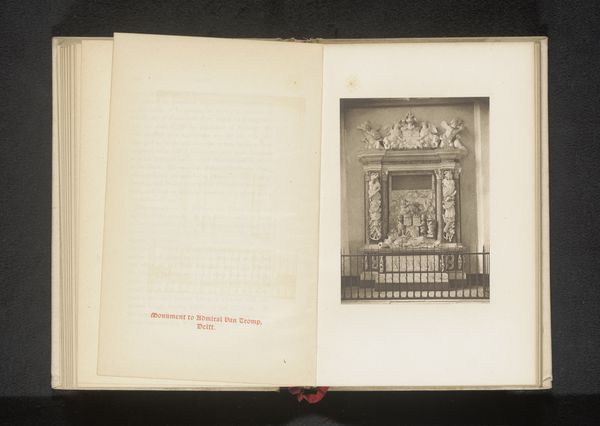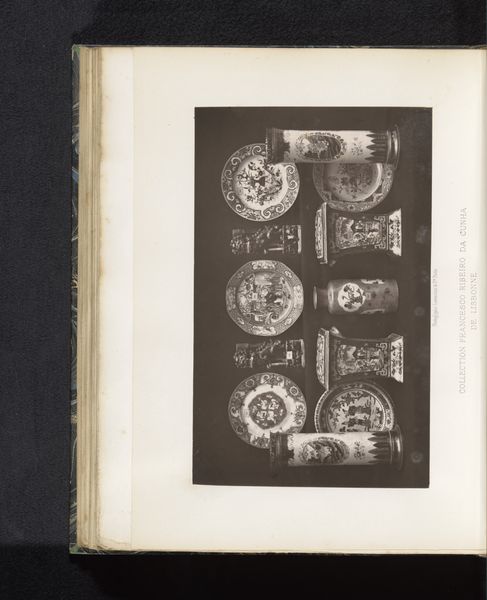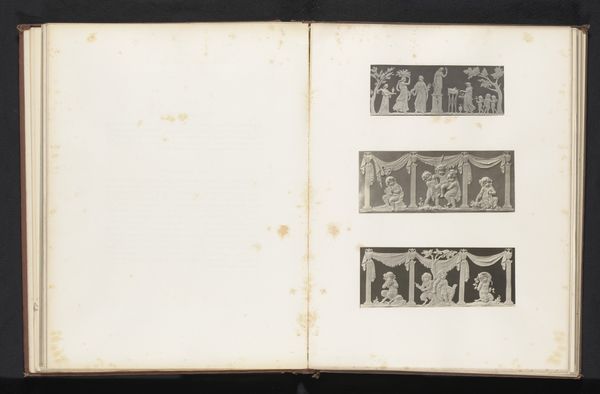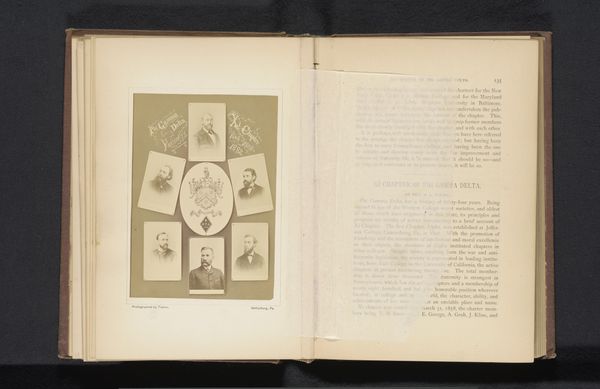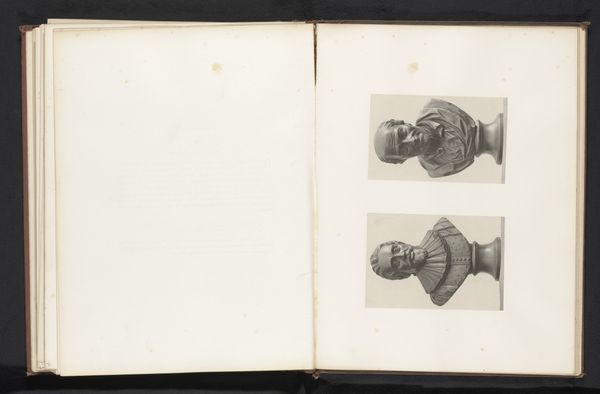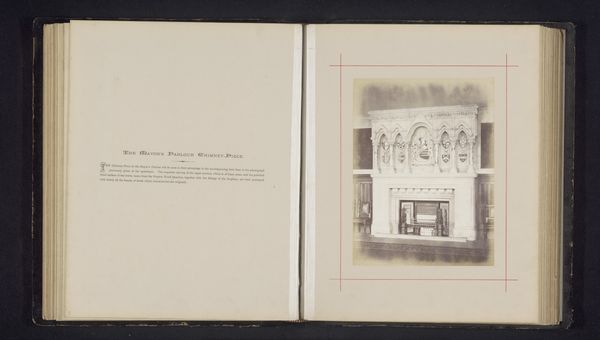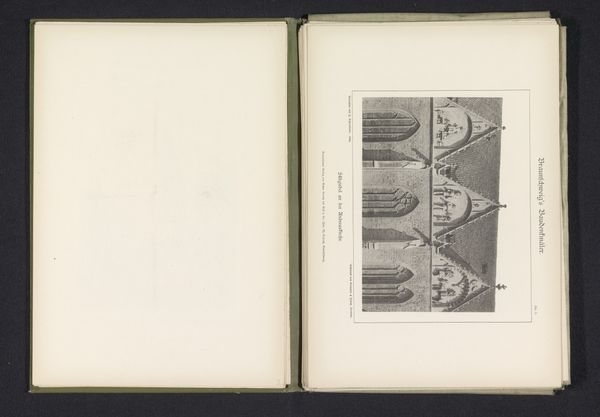
drawing, print, etching
#
drawing
# print
#
etching
#
vase
#
personal sketchbook
Dimensions: height 361 mm, width 270 mm
Copyright: Rijks Museum: Open Domain
Curator: This etching, titled "Vazen, voetstukken en kandelaren," meaning "Vases, Pedestals and Candelabras," is attributed to Joseph Cundall and dates to before 1873. Editor: Well, immediately I’m drawn to the stark contrast. It feels so austere, yet there's this almost playful repetition of forms… a kind of choreographed dance of decorative objects. Curator: Indeed. Note the process involved here: the print was likely made by laying the etching on a copper or zinc plate, biting it with acid, then inking and pressing it to create multiple images for broad consumption. What impact do you feel this reproductive technology has on the items presented? Editor: It's interesting to see such classically "high art" objects—the urns, the candelabras—rendered through a democratic medium. Suddenly, it's not about unique craftsmanship; it's about accessible design, and perhaps influencing taste on a larger scale. A little like printed lookbooks of classical objects to fuel desires and influence domestic designs! I wonder who Cundall imagined acquiring this book? Curator: Perhaps artists, manufacturers of ornamental ware or possibly the emerging middle class seeking to adorn their homes according to classically inspired fashions. Each vessel's form implies particular social rituals of display. Moreover, such readily available engravings shifted artistic agency from the artisans who conceived the original wares, or retailers, to the printer/publisher, thus introducing new considerations of copyright. Editor: So it's not just about looking at pretty objects, but about how industrialization and access changed the art world ecosystem. I’m reminded of today's product catalogs. But instead of highlighting the individual artist’s touch, there is emphasis on mechanical production for consumption. Does this democratization degrade these art objects, or elevate them? Curator: That is indeed a question this etching poses. While individual artworks of merit such as vases can express symbolic value, such displays can reflect aspiration towards particular social class values as readily marketable consumerism, reflecting cultural influences. Editor: In this age of disposable things, maybe pausing to really *see* everyday objects—whether reproduced or handcrafted—is its own quiet rebellion. Gives me pause... Curator: Yes, a reminder to look both *at* art, and to perceive their original intention and cultural contexts *within* society.
Comments
No comments
Be the first to comment and join the conversation on the ultimate creative platform.
